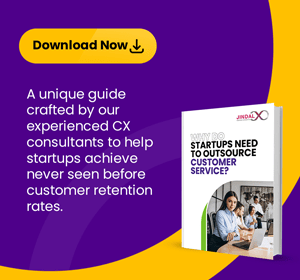
New technological advancements have been spread across the world. In this situation, organizations need to integrate internet-based technology with their current workflow to bring innovation to their work culture. Firms need to discard their obsolete methodologies and transform their workflow with the latest approach.
With the ongoing developments, taking advantage of new opportunities and staying ahead in the market is extremely important. Else, you risk losing your clients to other innovative competitors. Thus, you should keep up with the always changing digital scene. Nowadays, consumers are rational and choose from a variety of solutions to have the most seamless experience. Business process services are crucial in helping companies seize these chances and quicken the digitization of their operations.
What is Digital Transformation?
The process of “digital transformation” involves integrating web-based technology into every element of a company’s operations and providing value to customers. The digitization of business processes involves transitioning manual functions to virtual ones.
This requires the use of various emerging technologies such as:
- Cloud Computing
- Robotic Process Automation
- Workflow Management Software
- Business Process Management Software
- Artificial Intelligence
- Low-code Development Platforms
Organizations can use the same to boost productivity, concentrate on value-added tasks, simplify procedures, cut costs, and improve buyers’ experiences. Business entities now offer customized advice, real-time information, and quicker response times. This improves the consumer experience, fosters client loyalty and repeat business. However, organizations face challenges such as resistance to change with lack of skills and resources. Hence, successful implementation of major e-based changes requires a clear vision, a roadmap, and every stakeholder’s engagement.
Digital Transformation Strategy
Digital transformation is a crucial aspect of driving big change in an organization. It involves putting technology at the core of strategy, reducing operating expenses, and inefficiency to achieving future goals. Firms must realign their operations to adopt new ways of working for agility and experimentation.
A flexible technology core for sustainable change is essential to catalyze innovation and form ecosystem partnerships that drive speed and scale. A flexible approach allows for fast and sustainable change, while focusing on end-user needs is key.
People management is also essential for a successful transition. Companies need support from leaders with a culture aligned with new technologies to succeed. This includes the virtual foundation, operations, and a proficient staff. Technology offers many solutions, but companies often need to develop new talents when people operate in new ways to bring about lasting change.
Business Process Services and Digital Reformation
Did you know that your business processes can be automated and optimized with a strong service capability? Well, yes. While integrating business process services and digital technologies, you enjoy greater adaptability, which will assist your company in being effective in adapting to shifting market conditions. Hence, BPS makes your procedures more flexible to smoothly modify as per market shifts.
Business process services provide the expertise to make investment decisions on new digitization prospects. This acts as the binding factor that holds innovation and company together. With the help of BPS, the IT department can start facilitating and innovating within the company. This way, technology and customer outcomes are aligned with high-quality BPS. This serves as an example of how new tech capabilities relate to the procedure’s overall value.
How Do You Enable Digital Advancement?
It would be very challenging to implement big changes without a plan. Top level management knows the essence of adapting with growing market changes and considers it as necessary for successful survival in the fast-paced corporate environment of today. No matter what industry they are in, institutions are constantly altering to keep up with consumer needs. Here are five steps that can help you enable digital advancement in your firm:
Customer-Centric Approach
“It takes months to find a customer and seconds to lose one” —Vince Lombardi. Thus, when starting your business reformation, your focus should always be end-users. You need to understand their pain points and identify challenges they face during equipment sales, part replacement, service, or any other touchpoint. The focus of high-tech reformation for long-term success should be customer satisfaction. This is done by having a customer-centric approach. A company that prioritizes its customers will map out their journey and utilize that data to pinpoint areas where they can enhance their overall experience. There are numerous advantages to being customer centric. Businesses can produce goods and services that are more likely to satisfy the wants and preferences of their customers by concentrating on them.
Enhance the oversall CSAT by 17% through personalized CX strategy
Developing Your Strategy
The plans a business implements to deliver pleasant experiences at every customer touchpoint along the customer journey make up its customer experience (CX) strategy. Measuring customer satisfaction over time to provide exceptional experiences that increase customer loyalty is an important part of a successful CX strategy. However, the course of transformation is complex. So, you must create a well-thought plan with a desire to change that is inspired by values to successfully complete this journey. Therefore, you must establish a “transformation office” that serves as the focal point for all stakeholders to ensure that everyone is on the same page and working toward the same goals.
Breaking Down Barriers
The path to advancement often requires breaking down functional barriers within your organization. A smooth buyer experience necessitates collaboration between different departments. Sharing information and working cohesively are pivotal to overcoming internal challenges and ensuring your end-users receive standardized and high-quality service. Internal barriers must be broken down to create a coherent and customer-centric organization. Companies may overcome barriers and provide a great customer experience by encouraging cross-functional collaboration, setting similar goals, and cultivating a customer-centric culture.
Embracing an Agile Approach
Agility is the mainstay of any successful adaptation of new tech. Nurturing a flexible culture is vital for encouraging experimentation and the flourishing of innovative ideas. Adaptability enables your organization to navigate through changes effectively. By responding to change rather than following a plan, working with customers and stakeholders, providing value frequently, and continuously improving the process and product, agile frameworks can enhance customer happiness and loyalty. Agile frameworks can improve customer happiness and loyalty by delivering value early and frequently, interacting with customers and stakeholders, responding to change in a planned manner, and continuously improving the product and process.
Funding as an Investment
Funding digital transition is a step-by-step function. You can begin by taking an end-to-end view of online opportunities and requirements across the entire consumer journey in the short term. This way you can focus on enhancing the customer experience. Identify specific challenges that align with your desired investment and potential return on investment (ROI). Because increasing the customer experience can boost sales revenue by 2-7% and profits by 1-2%. By following this approach, organizations fund innovation internally, optimize technology investments, and remove obstacles that hinder excellent customer experience.
Technological transition is not an option but a necessity in today’s competitive environment. By prioritizing the client, developing a clear strategy, fostering collaboration, embracing agility, and adopting an investment-oriented mindset, your firm can navigate the path to reformation successfully.
How does Digital Evolution Drive Competitive Advantage?
Redefining organizational attitude is a prerequisite for internet-based transition for competitive edge. Agile workflow creation, testing, learning, and decentralized decision-making are the foundations of having a USP. Such organizational intelligence growth promotes competitive leverage and company innovation.
Competitive firms have highly optimized protocols. The ability of advancement to create competitive advantage is most readily apparent in its capacity to create solutions for increasing efficiency. Furthermore, it drives a competitive edge for businesses in various ways, including leveraging technologies to optimize operations, and improve agility. These technologies’ real-time data operations offer insightful information for making data-driven decisions and adapting to shifting market situations.
By offering personalized recommendations, real-time information with shorter response time, businesses may enhance the user experience, loyalty, repeat business, and reputation. By improving flexibility, businesses adapt quickly to changing market conditions, experiment with new models, and collaborate effectively with stakeholders.
Conclusion
With rapid increase in usage of digital technologies, business process services have a bright future ahead. As organizations want to improve their procedures and automate their operations, digital transformation is expected to become extremely important. Companies can opt to outsource complete or partial operations to a BPS provider like JindalX to aid a digital advancement strategy.
Many advantages result from this, including easier vendor management, greater competitive leverage, and access to superior call center technology. Although outsourcing is not always necessary for businesses, it will be a huge benefit when going through a transition. Thus, by embracing automation technology and adopting a process-centric attitude, businesses can foster innovation, improve the customer experience, and accomplish long-term success.
Today, businesses outsource their operations and simplify their procedures. This results in the standard of the end-product. So, if you are looking for a digital transformation in your organization, then you can outsource your operations with JindalX. We have three decades of experience in helping top-tier organizations to successfully manage your operations.









